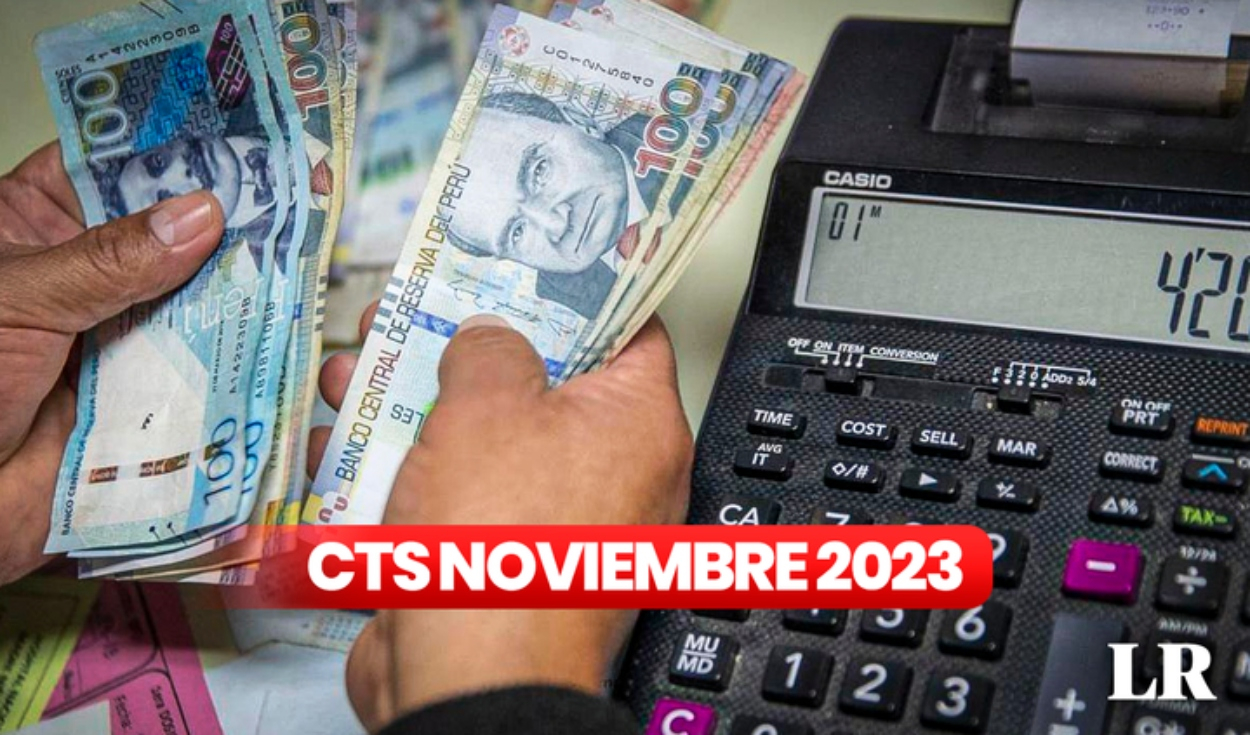
There are only a few days left for companies to make the second annual deposit of the Compensation for Time of Service (CTS). Said social benefit serves as economic support for workers registered on the payroll in the face of situations of unemploymentresignation or any other contingency that occurs after the termination of the employment relationship.
Given the proximity of the date, many citizens have doubts regarding the deadline for paying their CTS, how much money they are entitled to in this month of November and until when they can withdraw this payment. To answer these questions, we invite you to read the following note from La República.
➤What is CTS?
Compensation for Time of Service (CTS) is a labor benefit that companies grant to workers to protect them when their contractual relationship with the employer ends. In that sense, the CTS is designed as a savings fund for situations in which people become unemployed.
It must be taken into account that CTS deposits are made twice a year: the first payment is in May and the second, in November. In this regard, the amount assigned varies according to the labor regime of the company in which one works.
➤When do you deposit the November CTS?
In accordance with the National Superintendency of Labor Supervision (Sunafil), next Wednesday, November 15, the deadline expires for micro, small, medium and large companies to deposit their workers with the Compensation for Time of Service (CTS) that corresponds to the semiannual period. from May 1 to October 31, 2023.
➤ Who will receive their CTS payment in November and who will not?
According to the law, workers who are subject to the labor regime of private activity and who comply, on average, with a minimum working day of four hours a day will receive the CTS deposit in November.
In addition, those employees of small businesses also have the right to this compensation, which is computed at a rate of 15 daily payments for each year of complete service up to a maximum of 90 daily payments.
On the other hand, those who do not have the right to receive the payment of Compensation for Time of Service are the following:
- Workers who work less than four hours a day on average.
- Workers who receive 30% or more of the amount from the rates paid by the public for services.
- Microenterprise workers hired after the company registered with Remype.
- Workers in the agricultural labor regime who have chosen to collect their CTS together with their remuneration (Law No. 30110 and DS No. 005-2021-Midagri).
CTS, November: how to calculate the amount that corresponds to me?
According to the Lima Chamber of Commerce (CCL), the amount of the CTS varies depending on the type of company and the time worked in the semiannual period. So, if you want to effectively calculate this extra money, we recommend that you use the La República calculator, in which you will have to record the date you started your job, your gross salary, the computable period of work and if you receive the allowance. familiar.
To get a more precise idea, follow this example. If you earn the minimum living wage and have worked for six months, the calculation would be as follows:
- Remuneration to be considered: S/1,025
- 1/6 bonus: S/170.83
- Service time: 6 months.
The sum of these amounts is equivalent to S/1,195.83, which is divided by 2. So, the final result that you will see on your CTS payment slip is S/597.92.
CTS 2023: until what date can I withdraw my money?
According to Law No. 31480, which was published on May 25, 2022, the last day to freely dispose of 100% of the CTS is December 31, 2023. After the date has passed, workers will not be able to access all of the money until they end their contractual relationship with their employer. In this way, when the period expires, they will only be able to withdraw the excess of 4 salaries from their CTS.
It is worth mentioning that there are some legislative proposals that seek to extend the withdrawal deadline until December 2025. However, both the Ministry of Labor and the Superintendency of Banking, Insurance and AFP (SBS) have been against said bills. which belong to congressmen Luis Aragón and Jorge Flores.
Source: Larepublica
Alia is a professional author and journalist, working at 247 news agency. She writes on various topics from economy news to general interest pieces, providing readers with relevant and informative content. With years of experience, she brings a unique perspective and in-depth analysis to her work.











